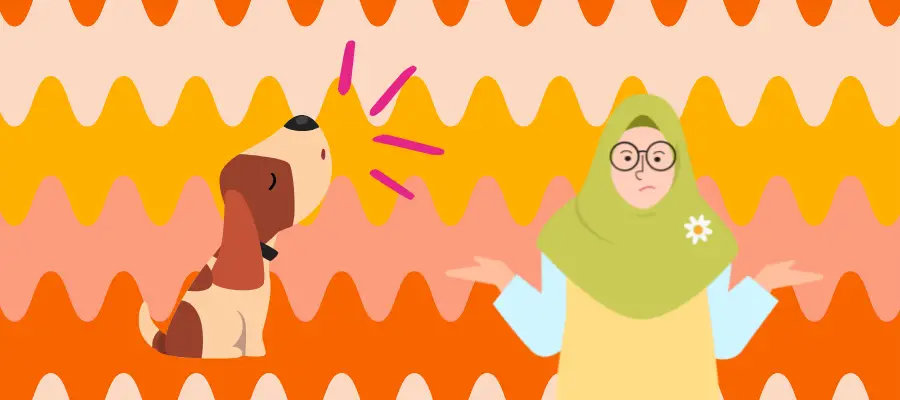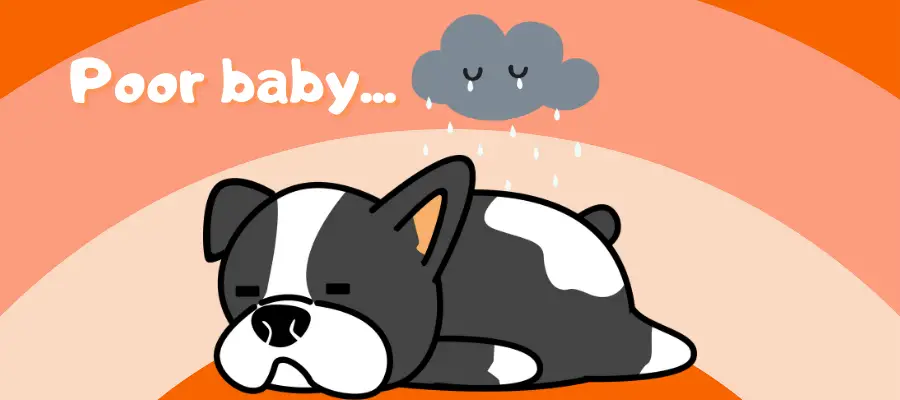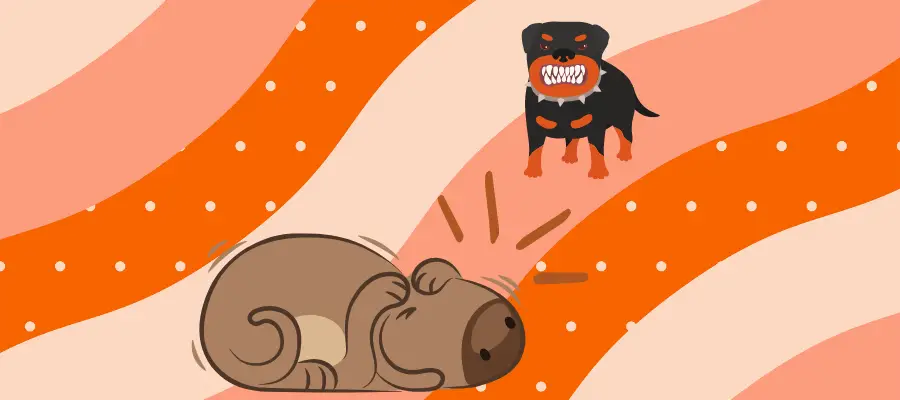Why Is My Dog Whining?
- Hunger
- Fear
- Attention
- Anxiety
- Pain
Why Is My Dog Whining?

Whining is a form of communication for dogs. They may whine when they’re hungry, tired, or thirsty. They may also whine when they want to go outside, need attention, or are feeling anxious or stressed. There is always a reason, so don’t ignore it. Otherwise, the whining can become a habit that’s difficult to break.
Common Reasons
Why is my dog whining? The most common reasons dogs whine are:
- they’re hungry or thirsty;
- they need to go outside;
- they want attention;
- they’re feeling anxious or stressed;
- they’re tired or sleepy;
- they’re in pain;
- they want something;
- they are overly excited;
- they greet people;
- they cannot reach desired objects.
If you can’t figure out why your dog is whining, look for body language clues, such as pacing, restless behavior, defensive posture, or avoiding eye contact. You may also want to consult with your veterinarian, who can help you rule out any medical causes for the whining.
You might also wonder: why is my dog crying? Do dogs cry at all? Click here to find out the answer!
Seeking Attention
Attention-seeking whining is probably the most common reasons dogs whine. Dogs are social creatures, and they often crave attention from their owners. If your dog is used to getting a lot of attention and then suddenly starts receiving less, he may start whining.
There are a few things you can do to address attention-seeking whining:
- First, make sure you’re providing your dog with enough exercise. A tired dog is a happy dog, and less likely to whine for attention.
- Second, try to ignore the whining. If you give in every time your dog whines, he will learn that whining gets him what he wants. Instead, only give your dog attention when he is quiet.
- Third, provide your dog with other forms of attention, such as petting, brushing, or playing.
- Fourth, if your dog is whining for food or water, make sure he has access to fresh food and water at all times.
- Fifth, if your dog is whining to go outside, try a schedule or routine, so he knows when to expect to go out.
- Lastly, do not scold your dog for whining. This will only make the problem worse.
Pain or Discomfort

Dogs also whine when they’re in pain or discomfort, especially if the pain is chronic. If you notice any other symptoms along with the whining, such as panting, limping, lethargy, or a change in appetite, it’s high time to see your vet.
Anxiety or Stress
Dogs may also whine when they’re feeling anxious or scared. This is often the case when there’s a change in the home, such as a new baby or pet. It may also happen during times of transition, such as a move to a new house.
If your dog is whining due to anxiety or stress, here’s what to do:
- First, try to create a calm environment for your dog. This may mean avoiding loud noises or chaotic situations.
- Second, provide plenty of opportunities for your dog to exercise.
- Third, consider using a calming supplement or product to help your dog feel more comfortable.
- Fourth, consult with a behaviorist or trainer to help you identify the source of your dog’s anxiety and find ways to address it.
Separation Anxiety
Separation anxiety is a type of anxiety that occurs when a dog is away from its owner. It takes a long time to help your dog, but eventually, he will overcome the fear. Common practices for separation anxiety are:
- leaving your pup with a toy or bone to keep it occupied;
- establishing a routine, so your dog knows when to expect you to leave and when you’ll be back;
- providing your dog with a walk or exercise before you leave;
- not making a big deal out of leaving or coming home – this only makes the anxiety worse.
Editor’s Note
My friend used to leave her laptop playing her voice recording on a loop, when she left her dog alone. Her dog was still anxious, but, according to her neighbors, whined way less when the recording was on.
Appeasement Gestures in Dogs

Why is my dog whining? Whining may also be an appeasement gesture in dogs. This is a dog’s way of saying, “I’m sorry, I don’t want to fight.” Appeasement gestures are common in dogs that are afraid or feel threatened. If your dog is whining and showing other signs of fear, such as cowering or tail tucked between the legs, he is scared.
Can You Stop Your Dog’s Whining?
Whining is a natural behavior for dogs, and it’s not always possible to stop it entirely. You can try the following tips, but don’t expect the whining to disappear completely.
- Make sure your dog gets enough food, toys and chews.
- Take your dog for walks or runs regularly.
- Give your dog plenty of attention and affection.
- If your dog is whining for attention, try ignoring the behavior.
- If possible, crate train your dog, so he has a comfortable place to stay when you’re away.
- Have regular vet check-ups to rule out any medical conditions for whining.
Frequently Asked Questions

Should You Ignore a Whining Dog?
That depends. Yes, if you’re sure your dog is whining for attention. No, if he is displaying alarming behavior or symptoms.
How Can You Tell If a Dog Is Whining and in Pain?
Dogs in pain usually whimper, sit in one place, or seek comfort. They are visibly uncomfortable with touch, and lack energy to play.
Do Dogs Whine When Depressed?
Sometimes they do. They also cover their faces. Depressed dogs also seem sleepy, tired, and anxious.
What Dog Breeds Whine the Most?
A few breeds that are infamous for excessive whining are: Chinese Crested dog, Husky, Bloodhound, and Alaskan Malamute.
Sarah Jameson is a journalist, reporter and a pet nutritionist. She is married to Peter, and they have two beautiful children, Zoey and Quinn. In her spare time, Sarah enjoys cooking for her family and playing snooker. She also loves spending time with her Scottish Terrier, Bobby.











